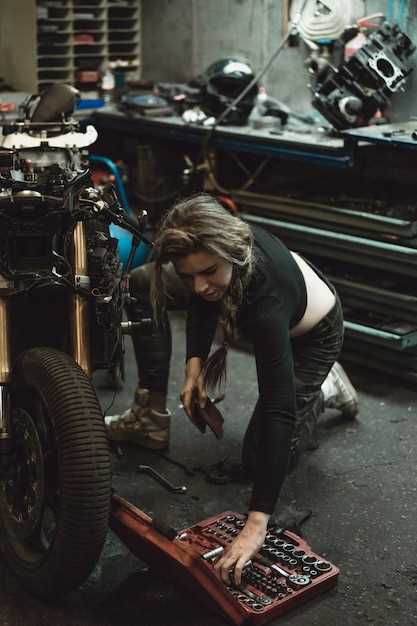
As race day approaches, the anticipation builds, and every detail counts. For many drivers, the night before the big event becomes a crucial time for last-minute tuning. Precision and performance are paramount, and this final touch can make all the difference on the track.
Preparing your car the night before is not just about making adjustments; it’s about ensuring that every component is in optimal condition. This is the time to check the engine tuning, fine-tune suspension settings, and ensure that tires are properly inflated and aligned. Small oversights can lead to significant setbacks, so a thorough inspection is essential.
In this article, we will explore effective strategies for tuning your car in those precious final hours. Whether you’re a seasoned racer or a novice, understanding the nuances of last-minute adjustments can enhance your performance and boost your confidence on race day.
Final Adjustments to Suspension Settings
As race day approaches, final tuning of your car’s suspension settings becomes crucial for optimal performance on the track. The night before the race is the perfect time to focus on these adjustments, ensuring that your car can handle the unique challenges of the circuit. Start by assessing the current setup and identifying any areas that may require improvement based on your previous experiences or recent changes in the car’s configuration.
Begin with the ride height; adjusting this can significantly affect the car’s center of gravity and thus its handling characteristics. Lowering the ride height can enhance grip but may also lead to bottoming out, especially on bumpy surfaces. Conversely, a higher ride height may provide added clearance but can compromise aerodynamics. Aim for a balanced compromise that suits the track conditions expected on race day.
Next, focus on damping settings. The right balance between compression and rebound damping can drastically improve traction and stability. Adjust the settings according to the track’s surface; for example, a smoother track might require softer settings, while a rougher surface may benefit from stiffer settings. Testing and tuning these values can help achieve the ideal response during high-speed turns and sudden maneuvers.
Don’t forget to review the anti-roll bar settings. These bars influence how weight transfers during cornering and play a key role in maintaining stability. A stiffer anti-roll bar can reduce body roll, enhancing cornering precision. However, a softer setup might improve grip on uneven surfaces. Finding the right balance is essential for optimal performance.
Finally, always ensure that your alignment settings are dialed in. Proper camber, caster, and toe angles can improve tire contact with the track, enhancing traction and tire wear. Perform a quick check to ensure that all settings align with your intended strategy for race day conditions.
Taking the time to make these final adjustments the night before the race will greatly increase your chances of success. Remember, precision in tuning your suspension can lead to significant improvements in handling, stability, and overall performance on the track.
Optimizing Tire Pressure and Grip

As race day approaches, the last-minute preparations can significantly impact your vehicle’s performance on the track. One of the most critical aspects of this prep is optimizing tire pressure to ensure maximum grip and stability.
The right tire pressure can enhance the contact patch between your tires and the racing surface. A lower pressure typically increases the tire’s footprint, allowing for better traction, especially on corners. However, it’s essential to strike a balance; too low of a pressure can lead to tire overheating and premature wear. Conversely, excessive pressure may cause a reduction in grip, resulting in skidding during sharp turns.
Before adjusting your tire pressure, assess the track conditions. If the surface is cooler or wet, consider lowering the pressure slightly to increase grip. On the other hand, if conditions are hot and dry, maintaining a higher pressure can prevent excessive tire flexing.
Use a reliable tire pressure gauge to make precise adjustments. It’s advisable to check pressures both before and after a practice run, as tires heat up and expand, affecting performance. Document these adjustments, as they can provide valuable insights for future races.
In summary, optimizing tire pressure is a vital part of your last-minute race prep. By carefully adjusting tire pressure according to track conditions, you can enhance grip and improve your overall racing experience.
Double-Checking Fuel and Engine Parameters

As race day approaches, the importance of double-checking fuel and engine parameters cannot be overstated. Proper prep ensures that your vehicle performs optimally during competition. Begin by verifying the fuel type and grade, as using the wrong specification can significantly affect your car’s performance. Ensure that the fuel tank is filled adequately and that the fuel system is free from contaminants.
Next, examine the engine tuning settings. This includes checking the air-fuel ratio to ensure it aligns with the optimal performance requirements for race conditions. A balanced mix can improve power delivery and throttle response, providing an advantage on the track. Utilize a tuning software or dashboard systems to monitor real-time data and make necessary adjustments.
Inspect all vital engine parameters such as ignition timing, boost pressure (if applicable), and engine temperature. Each of these factors contributes to overall engine performance; therefore, ensuring they are within recommended ranges will help prevent issues during the race. If adjustments are needed, it’s crucial to make them the night before to allow time for any additional tuning or testing.
Lastly, don’t forget to check the condition of your fuel lines and filters. Any leaks or blockages can lead to performance losses or engine failure. By meticulously double-checking these aspects, you are setting the stage for a successful race day, allowing you to focus on driving rather than mechanical uncertainties.



